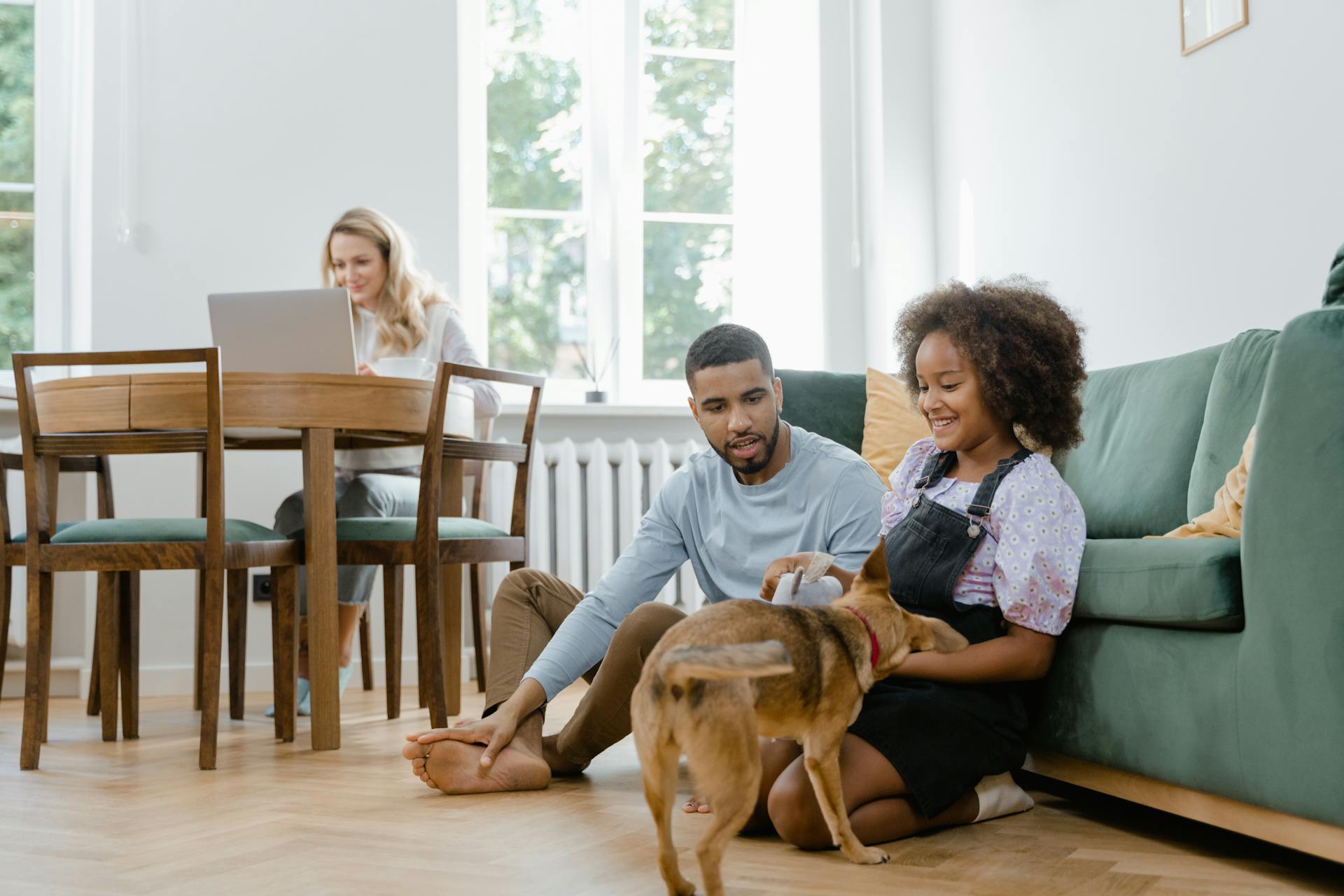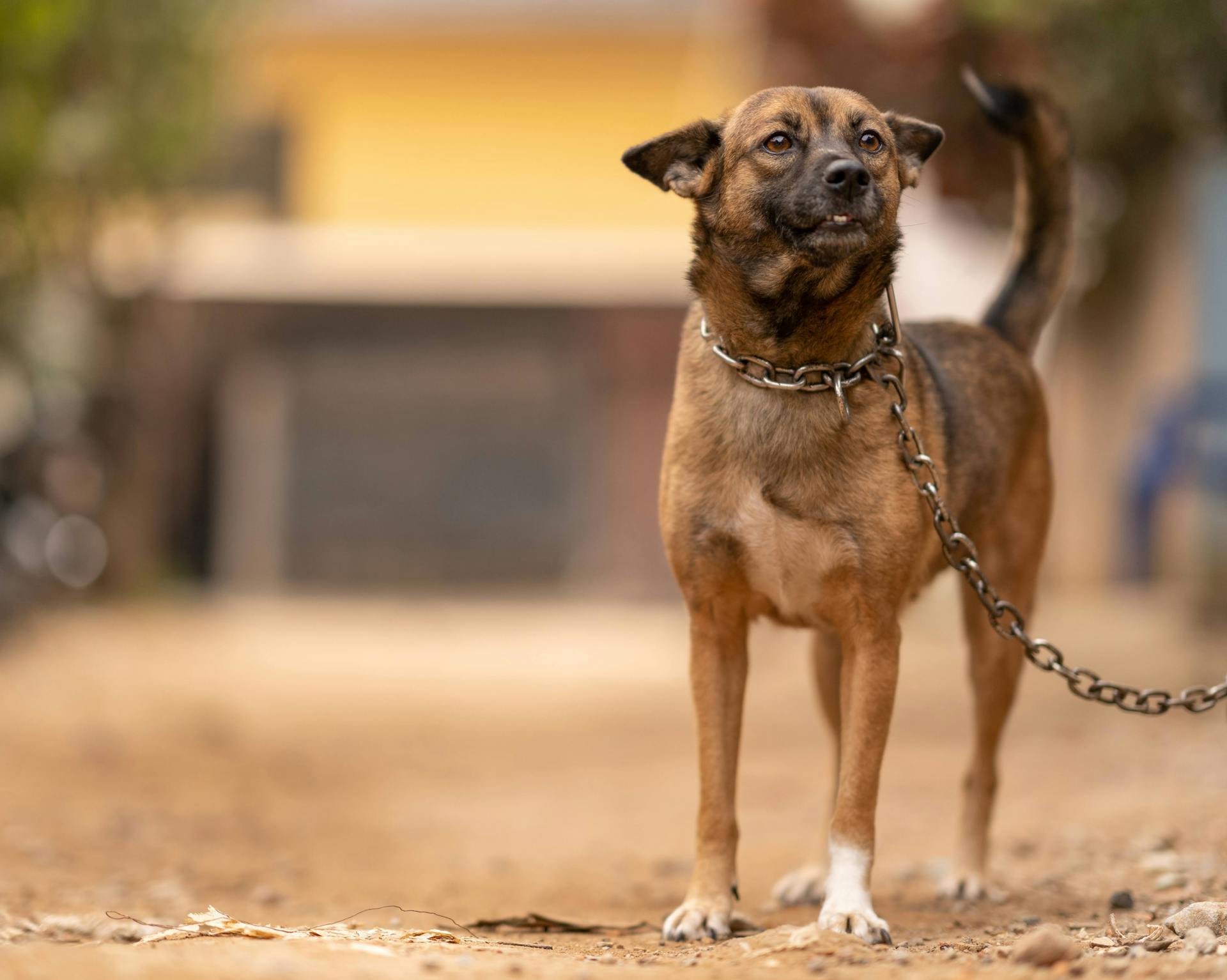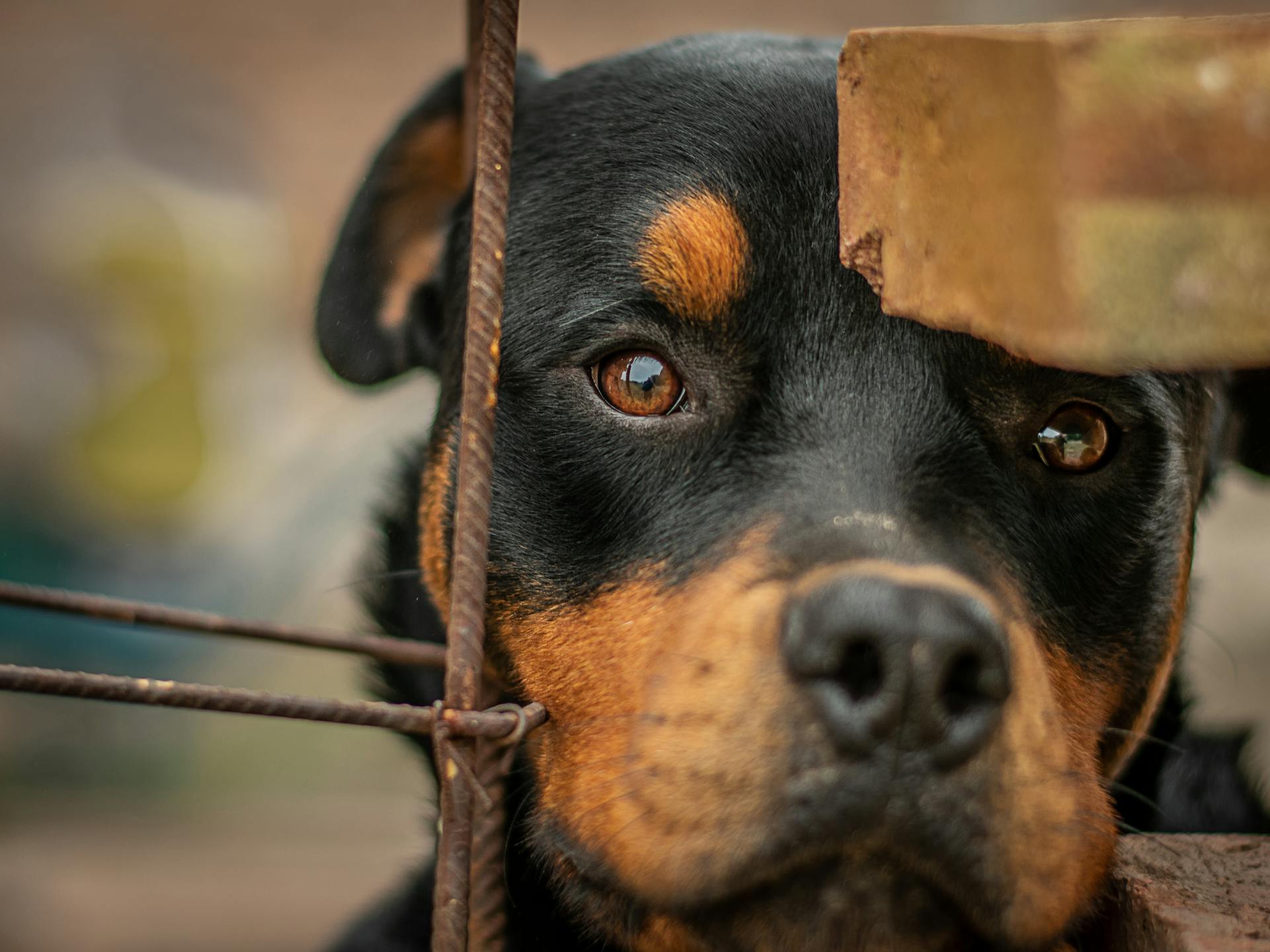
In many cities and countries, pitbulls are banned due to their perceived aggressive nature, which is often linked to their history as fighting dogs.
The first recorded pitbull ban was in England in 1991, following a series of attacks that led to public outcry.
Pitbulls are often misunderstood, and their temperament can be just as loving and gentle as any other breed.
A ban on pitbulls can have serious consequences for responsible owners who have done nothing wrong, including confiscation of their pets and hefty fines.
Arguments for and Against Breed-Specific Legislation (BSL)
BSL was enacted in Prince George's County, Maryland, and it led to a 43% decrease in overall dog bites and a 35% decrease in pit bull bites after 14 years.
According to DogsBite.org, between 2005 and 2019, there were at least 521 dog bite-related deaths, with 346 attributed to pit bulls.
Prior to BSL, there were 853 dog bites reported in Prince George's County in 1996, with 108 from pit bulls.
Some people believe that BSL makes communities safer by preventing dog attacks on humans, dogs, and other animals before they happen.
However, multiple peer-reviewed studies have found that BSL does not improve public safety, and decades of data from cities that enacted BSL in the 1980s and 1990s show that it does not reduce dog bites.
The American Veterinary Medical Association (AVMA) concluded in 2014 that there is no evidence that breed-specific bans reduce the rate or severity of bite injuries.
Here are some statistics on dog bites and fatalities:
Critics of BSL argue that it's unfair to assume that entire breeds are inherently dangerous and that each dog should be evaluated individually.
A study published in the Journal of the American Veterinary Medical Association (JAVMA) in 2000 found that in over half of fatal dog attacks, the dog involved was a "pit bull-type" or a Rottweiler.
However, the Center for Insurance Policy and Research (CIPR) notes that it's not always easy to determine a dog's breed, and the term "pit bull" can become a catch-all category for any dog that resembles a bulldog or a Bull Terrier.
Some cities have moved away from BSL and are adopting breed-neutral laws instead.
In fact, over 100 municipalities across the USA have overturned bans and other restrictions that target dogs in the pit bull family since 2012.
Worth a look: What Breed Is a Bull Terrier
Understanding BSL
BSL makes communities safer by regulating breeds that have a genetic propensity to attack and inflict severe injuries. According to DogsBite.org, enacting BSL can avert first attacks by these breeds, which often result in severe injury or even death.
Data collected by DogsBite.org shows that between 2005 and 2019, at least 521 deaths were caused by dog bites, with 346 attributed to pit bulls. Prior to a BSL enactment in Prince George's County, Maryland, there were 853 dog bites reported in 1996, with 108 from pit bulls.
The goal of BSL is to prevent dog attacks, not to unfairly target individual dogs. However, opponents of BSL argue that it's not an accurate way to identify individual mixed-breed dogs as members of banned breeds, citing approaches like Council Bluffs' ban on dogs with "the majority of physical traits" of a banned breed.
Readers also liked: Popular Police Dogs
How Training and Breeding Affect a Dog's Behavior
Training and breeding can have a significant impact on a dog's behavior and reputation. A study published in the Journal of the American Veterinary Medical Association found that dogs from certain breeds, such as "pit bull-type" or Rottweiler, were involved in more than half of fatal dog attacks.
However, critics of BSL argue that it's unfair to assume that entire breeds are inherently dangerous. They point out that each dog should be evaluated individually, taking into account its breeding, health, socialization, and environment.
Some breeds, like German Shepherds, Dobermans, and Rottweilers, have often been trained and used as guard dogs, police dogs, and military dogs. This can lead people to assume that the entire breed is naturally aggressive and dangerous.
Public perception of a breed can change over time. For example, before they developed a reputation for violence, pit bulls had a more lovable image, as seen in the 1930s Our Gang movies and World War I and II propaganda posters.
Proponents of BSL argue that dogs like pit bulls have been specifically bred to have more dangerous physical and behavioral characteristics. However, multiple studies have found that this is not the case, and breed is a poor predictor of aggressiveness.
Here are some key findings from controlled studies on dog aggression and bites:
- A 2008 study published in Applied Animal Behavior Science found that breed is not a reliable predictor of aggressive behavior.
- A study comparing Golden Retrievers to targeted dog breeds found that Golden Retrievers showed aggression at the same rate.
- The AVMA Literature Review stated that breed is a poor sole predictor of aggressiveness and that pit bull-type dogs are not implicated in controlled studies.
What Is BDL?

Breed-discriminatory legislation, or BDL, is any law or policy that prohibits or places restrictions on individual dogs because of their supposed breed.
Over time, different breeds have been targeted, including German Shepherds and Dobermans.
Pit bull terriers are often the target of BDL today, so when we read about BDL in the news, it's a safe bet that the law is about them.
BDL can also include laws that don't outright ban pit bull terriers but create de facto bans.
These laws might require owners of supposed pit bull terriers to buy expensive insurance policies or keep the dog muzzled at all times.
The law creates such tough restrictions that many owners are forced to give up their family pet.
A different take: Bull Terrier before Breeding
BSL and Its Effects
BSL makes communities safer by regulating breeds with a genetic propensity to attack and inflict severe injuries.
Data shows that at least 521 deaths due to dog bites occurred between 2005 and 2019, with 346 attributed to pit bulls.
Prior to BSL enactment in Prince George's County, Maryland, there were 853 dog bites reported, with 108 from pit bulls, but after the ban, overall dog bites decreased 43% and pit bull bites were down 35%.
However, there is no evidence that BSL makes communities safer, as it treats the result (a dog bite) instead of the cause (bad animal owners).
In Miami-Dade County, Florida, the pit bull ban has not reduced dog bites, as the county still euthanizes about 800 illegally owned pit bulls per year.
People who breed or train dogs for illegal activities will simply switch to another breed if pit bulls are banned, as seen in Council Bluff, Iowa, where Boxer and Labrador Retriever bites increased after a pit bull ban.
BSL Makes Communities Safer
BSL makes communities safer by preventing dog attacks before they happen. According to DogsBite.org, enacting BSL can regulate breeds with a genetic propensity to attack and inflict severe injuries.

DogsBite.org collected data showing at least 521 deaths due to dog bites between 2005 and 2019, with 346 attributed to pit bulls. This highlights the need for BSL to prevent such attacks.
Prior to BSL enactment in Prince George’s County, Maryland, there were 853 dog bites reported in 1996, including 108 from pit bulls. After the ban, overall dog bites decreased by 43% and pit bull bites were down 35%.
The data from Prince George’s County is a clear example of how BSL can be effective in reducing dog bites. By regulating breeds that are prone to attacking, communities can become safer for everyone.
BSL Costs
BDL is expensive and time-consuming to enforce, causing financial burdens on dog owners and taxpayers.
The costs of enforcing BDL are substantial, including animal control, sheltering seized animals, euthanasia, and court fees.
Prince George's County, MD spent roughly $570,000 in two years on kenneling costs after instituting a ban.
Animal protection group, Best Friends Animal Society, created a formula to estimate the annual animal control costs in cities or states with pit bull terrier bans.
The formula calculates costs for enforcement, kenneling and veterinary care, euthanizing and disposal, litigation costs, and DNA testing.
For example, the city of Albany, NY would have to spend $185,667 on BDL every year.
Here are some possible BDL costs:
- Animal control (seizing and impounding animals)
- Sheltering seized animals
- Euthanasia (and disposal of body)
- Court fees
Applying "Dangerous Dog" Rules
Some municipalities regulate certain breeds by declaring them automatically dangerous. Des Moines, for example, has requirements for "high risk" dogs that include making sure the animal is securely confined while at home, and wearing a muzzle while in public.
The definition of a "high risk" dog in Des Moines includes animals that have displayed dangerous or aggressive behavior, animals that have been trained to fight other dogs or attack humans, and several breeds of pit bull-type dogs, regardless of their behavior or training.
Intriguing read: Black Breeds of Dogs
In Des Moines, owning a "high risk" dog comes with significant responsibilities, including purchasing insurance that will pay at least $100,000 to cover injuries or property damage caused by the dog. This is just one example of how municipalities can apply "dangerous dog" rules to specific breeds.
Here are some examples of how municipalities regulate certain breeds:
Note that these regulations often have exceptions, such as a veterinarian confirming that sterilization would seriously harm the animal. It's essential to understand the specific rules in your area before owning a dog.
Pit Bull Breed and BSL
Pit bulls are often at the center of breed-specific legislation (BSL) debates.
According to DogsBite.org, between 2005 and 2019, there were at least 521 dog bite-related deaths in the US, with 346 attributed to pit bulls.
Pit bulls have a genetic propensity to attack, and first attacks by these breeds often result in severe injuries.
Data from DogsBite.org shows that 346 out of 521 dog bite-related deaths between 2005 and 2019 were attributed to pit bulls.
Some municipalities, like Des Moines, Iowa, allow pit bull owners but impose significant insurance requirements, such as paying at least $100,000 to cover injuries or property damage caused by their dogs.
In Prince George's County, Maryland, BSL was enacted, which led to a 43% decrease in overall dog bites and a 35% decrease in pit bull bites 14 years after the ban.
Here's a breakdown of the number of dog bite-related deaths attributed to different breeds between 2005 and 2019:
Pit Bull Breed
The term "pit bull" is often misunderstood, and it's not as simple as it seems. "Pit bull" is an umbrella term that includes a number of different dog breeds and mixed breed dogs.
American Pit Bull Terriers and Staffordshire Bull Terriers are two breeds that are commonly included in the "pit bull" category. The list of breeds included has expanded over time, and it will likely continue to do so.
On a similar theme: Breeding Yorkshire Terriers
There isn't a single definition of "pit bull", which can make it difficult to determine what a "pit bull" actually is. If a dog has certain physical characteristics, like a square head or barrel chest, she may be labeled a "pit bull" regardless of her actual breed.
People often think that if a dog looks like a "pit bull", it must be a specific breed, but that's not always the case.
Why Pit Bulls Dominate the News
Pit bulls dominate the news because the media has sensationalized them. The media has a tendency to focus on specific breeds, often inaccurately identifying them as pit bulls.
The National Canine Research Council tracked four dog bite injuries and found that the case involving a supposed "pit bull" received 230 newspaper articles, while a dog bite that killed a person only received two articles. This shows how the media can create a skewed perception of a breed.
Journalists and bystanders often mistakenly identify a wide variety of dogs as "pit bulls" using visual breed identification. This is because it's nearly impossible to identify a dog's breed without DNA testing or knowledge of the dog's breeding.
Studies have found that visual breed identification is so inaccurate that the National Canine Research Council decided not to rely on it in their studies. They concluded that any studies that link dog bite-related fatalities and breed can no longer be responsibly cited.
The Centers for Disease Control reviewed dog bite-related fatalities reported by the media in the 1980s, but their report was flawed because it relied on media stories instead of verifying the actual dog breed.
Examples of Rules
Some municipalities have outright bans on specific dog breeds, like Council Bluffs, Iowa, which prohibits residents from owning American Pit Bull Terriers.
In other places, like Des Moines, Iowa, owning a pit bull is allowed, but with significant insurance requirements. Owners must buy insurance that will pay at least $100,000 to cover injuries or property damage caused by their dogs.
Kansas City, Missouri, requires sterilization of certain dog breeds, including pit bulls. However, there's an exception if a veterinarian confirms that the procedure risks seriously harming the animal.
Here are some examples of breed-specific rules:
- Outright bans, like in Council Bluffs, Iowa, where American Pit Bull Terriers are prohibited.
- Additional insurance requirements, like in Des Moines, Iowa, where pit bull owners must buy insurance that covers at least $100,000 in damages.
- Mandatory sterilization, like in Kansas City, Missouri, where certain dog breeds, including pit bulls, are required to be sterilized.
Javma Special Report
The JAVMA special report on breeds of dogs involved in fatal human attacks in the United States between 1979 and 1998 provides some interesting insights.
The report notes that American Pit Bull Terriers were among the breeds banned by some municipalities, such as Council Bluffs, Iowa, which prohibits residents from owning them.
Council Bluffs' outright ban on certain breeds is not unique, as other cities have implemented similar measures to address public safety concerns.
In Des Moines, Iowa, for example, pit bull owners must buy insurance that will pay at least $100,000 to cover injuries or property damage caused by their dogs.
Kansas City, Missouri, requires sterilization of certain dog breeds, including pit bulls, unless a veterinarian confirms that the procedure risks seriously harming the animal.
Additional reading: Golden Breeds of Dogs
A community approach, as recommended by the American Veterinary Medical Association (AVMA) report, focuses on education, training, and enforcement of non-breed-specific safety rules, such as leash laws.
Spaying and neutering programs are also crucial in reducing the likelihood of dangerous behavior in dogs, as unneutered male dogs are much more likely to exhibit such behavior.
Alternatives to BSL
The report recommends a community approach, which includes educational programs for dog owners and the public. This approach also emphasizes proper enforcement of non-breed-specific safety rules, such as leash laws.
Spaying and neutering programs are crucial, as unneutered male dogs are more likely to exhibit aggressive behavior. In fact, the report notes that this is a major factor in dog bites and attacks.
Research has found that preventable human decisions regarding dog care and control are the most important factors in dog bites and attacks. This means that responsible pet ownership is key to public safety.
A 2013 study by the National Canine Research Council found that over 76% of dog bite-related fatalities involved dogs that were isolated from their owners and regular human interactions. This highlights the importance of treating dogs as part of the family unit.
Effective breed-neutral laws focus on individual owners and animals, rather than targeting specific breeds. Two examples of such laws are available on the Best Friends Animal Society website, from Skokie Park, Illinois, and Highlands Park, Illinois.
Sources
- https://www.aspca.org/about-us/aspca-policy-and-position-statements/position-statement-pit-bulls
- https://www.avma.org/resources-tools/pet-owners/dog-bite-prevention/why-breed-specific-legislation-not-answer
- https://www.procon.org/headlines/pit-bull-bans-top-2-pros-and-cons/
- https://www.nolo.com/legal-encyclopedia/free-books/dog-book/chapter12-4.html
- https://www.forallanimals.org/pit-bull-terriers-breed-discriminatory-legislation-faqs/
Featured Images: pexels.com


